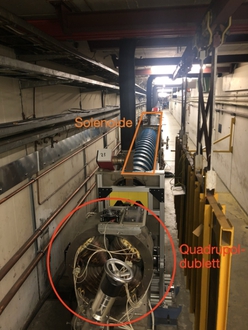Energy efficiency par excellence
Sustainability
Energy efficiency par excellence
One of the most important machines here at DESY is the LINAC II, which is part of the so-called pre-accelerator complex. In the past, it was responsible for supplying electrons and positrons for the experiments at HERA. Today it concentrates entirely on electrons and is the heart of PETRA III and DESY's future project PETRA IV.
The journey of the electrons begins in the LINAC. Here they are accelerated in various sections to a total of 450 MeV. Magnetic superstructures are used for this. Once these are energized, magnetic fields are generated - depending on the size and shape of these structures - to move and steer the particles. It is obvious that the speeds that have to be achieved also require a lot of energy to operate the accelerator facilities.
Benno Zeitler from the group MIN noticed two things when studying the further development of the LINAC:
-
two coil-shaped magnets, so-called solenoids, are used in the LINAC to transport the electrons.
-
there is an old quadrupole doublet in the facility, which was still there but was no longer used. This doublet - two consecutive quadrupoles - used to be used to focus the electrons, i.e. to direct them to a single point.

At the LINAC: The quadrupole doublet can be seen in the foreground, followed by the solenoid magnet.
Both structures (actually) have different functions and are therefore also differently current-intensive in operation.
A solenoid is long and round like a cylinder. As a result, it forms the beam into a circle, as it is needed here at the end. A quadrupole, on the other hand, consists of four opposing magnets and is significantly more efficient than a solenoid. However, the generated beam shape is more complicated, and several of these structures are required to get an oval or even circular beam.
Benno Zeitler has calculated how much power the quadrupole doublet needs to transport the electrons without deflection and compared this value with the power required by the coils to achieve the same result. The result is incredible: 9 W compared to 162 kW.
In April 2023, this change was implemented and it turned out that the saving is even greater. It is 180 kW! With around 6,500 operating hours per year, this corresponds to around 1.2 GWh that can be saved - a fifth of the total consumption of the LINAC II complex. This will save DESY hard cash. And not only that: 468 tons less CO2 emissions will be generated.
This measure contributes significantly to DESY's sustainable energy concept and we are very pleased about it.
Thank you!